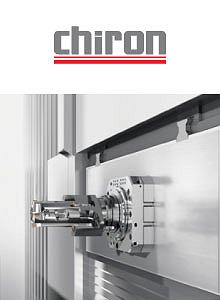The Project: "Hard turning of "Gear-Satellite" part"


Gear-satellite in the operating position
KSM specialists created a technological process, selected tools and developed the technology within the project «Hard turning parts "Gear-Sat 11.5016"» on Monforts CNC lathe RNC 500. The project aim is replacing the grinding operations by hard turning to give bases for subsequent tooth-grinding, processing of gear ring (hard turning), radial facing and boring grooves.
The results of our work are reflected in this project.
Blank data
Part: Gear-Satellite №11.5016
Material: 12Х2Н4А-Ш
Hardness: 59...61 HRC
Requirements
- Surface roughness:
- Ø105.4(+0.01) mm (max Ra~0.63 µm);
- Ø166.42(-0.05) mm (max Ra~1.25 µm);
- End face (max Ra~2.5 µm);
- Providing minimal bore run-out Ø105.4 max 0.004 mm;
- Providing minimal face parallelism tolerance failure 0.01 mm.
THE FIRST BLOCK
At the first stage of preparation for gear-satellite machining a special device (Fig. 1) was designed and manufactured. This device balances tooth profile run-out of Ø105.4 not more than 0.05 mm. According to the characteristics of the processed material, the hardness and the target roughness, a tool for hard turning was chosen, as well as processing modes, that allow the surface roughness Ra = 0.29 µm.

Figure 1 A device for locating details on the ring gear (Pendulum cams)
Testing
- Radial turning L = 75 +0.3 mm and boring Ø105.3 mm;
- Finished boring the flute Ø110.5 (+0.07) mm final;
- Finished pruning the end face L = 75 + 0.3 mm and boring Ø105.3 mm
1.

Figure 2 Cut-map
2.

Figure 3 Cut-map
Tests are carried out in two stages. At the first stage the workpiece was mounted in three-jaw chuck using a special tool (see Fig. 1), which allowed to machine face and bore hole Ø105. 4 mm (see Fig. 4).
3.

Figure 4 Cut-map
Machining was carried out using a compressed air on tool without coolant. Machining was carried out in two passes: roughing and finishing.
Test data
Hard turning provided the surface roughness within Ra = 0.25 – 0.32 µm with machining by plate with root radius of 0.8 mm.
THE SECOND BLOCK
At the second stage of preparation for gear-satellite machining a special device (Fig. 5) was designed and manufactured. This device balances tooth profile run-out relating to Ø105.4 not more than 0.05 mm. According to the processed material characteristics, the hardness and the target roughness, a tool for hard turning was chosen, as well as processing modes, that allow the surface roughness Ra = 0.3 µm.

Figure 5 Based device for details on internal diameter 105.4 mm (collet chuck)
- Radial turning L = 75(-0.1) mm;
- Finished boring the flute Ø166.4 (-0.05) mm ;
1.

Figure 6 Cut-map
2.

Figure 7 Cut-map
Test data
Hard turning provided the as-turned finish within Ra = 0.3 – 0.32 µm with machining by plate with root radius
of 0.8 mm.
Click on the image to view it:








